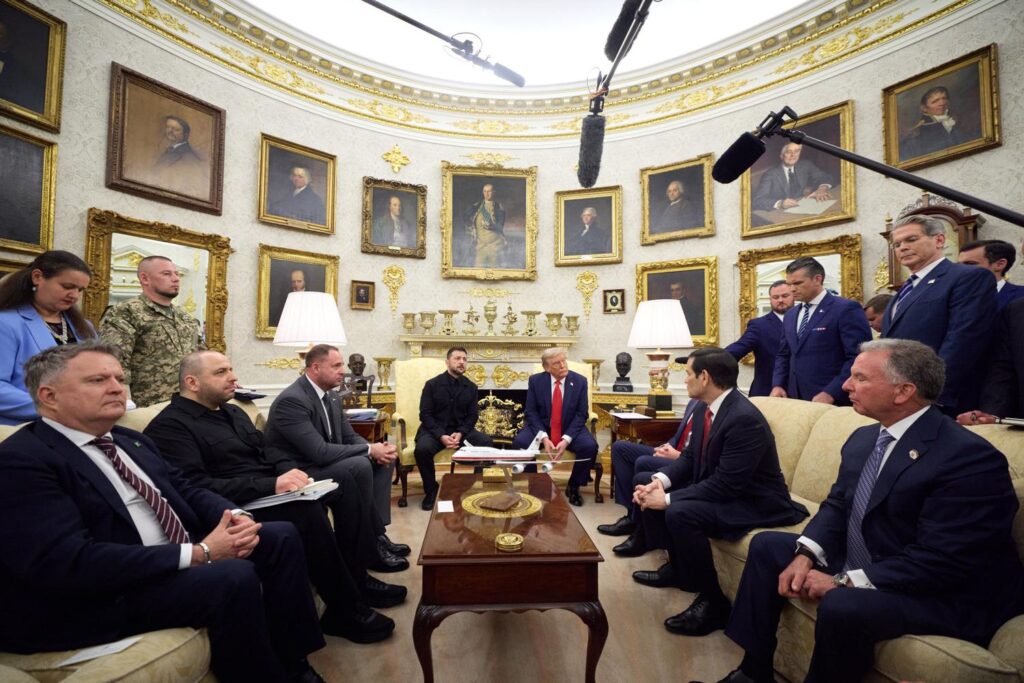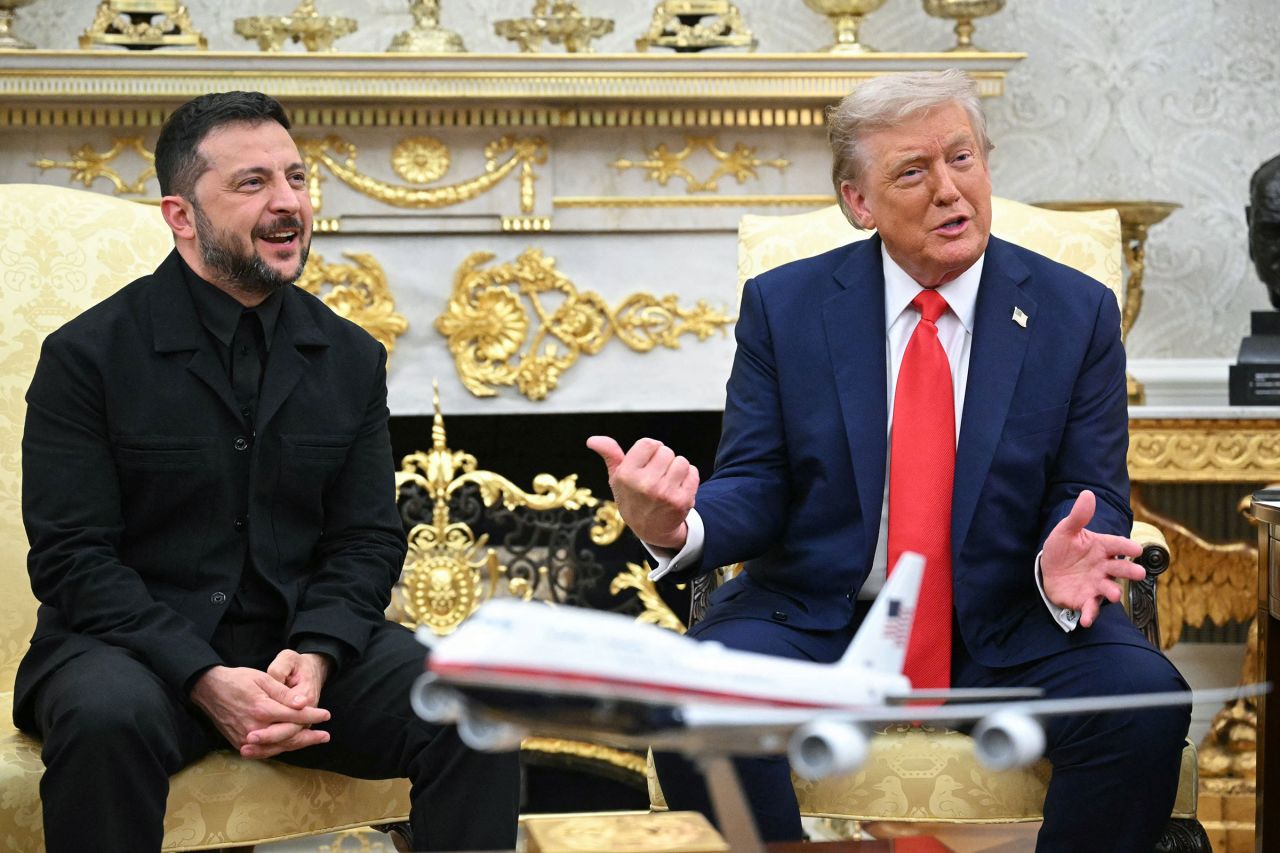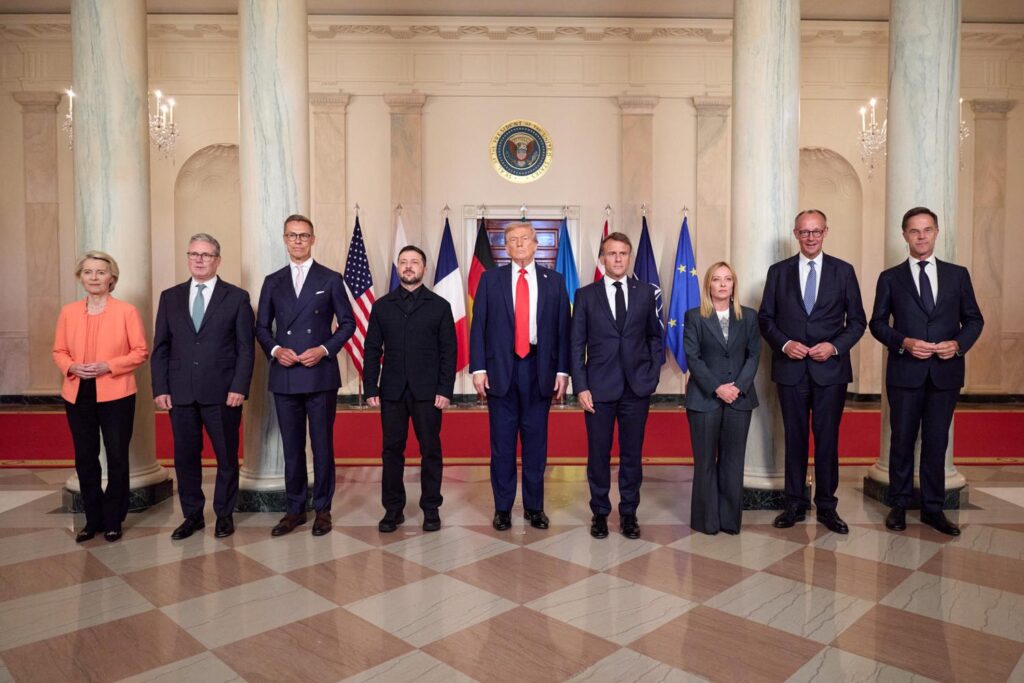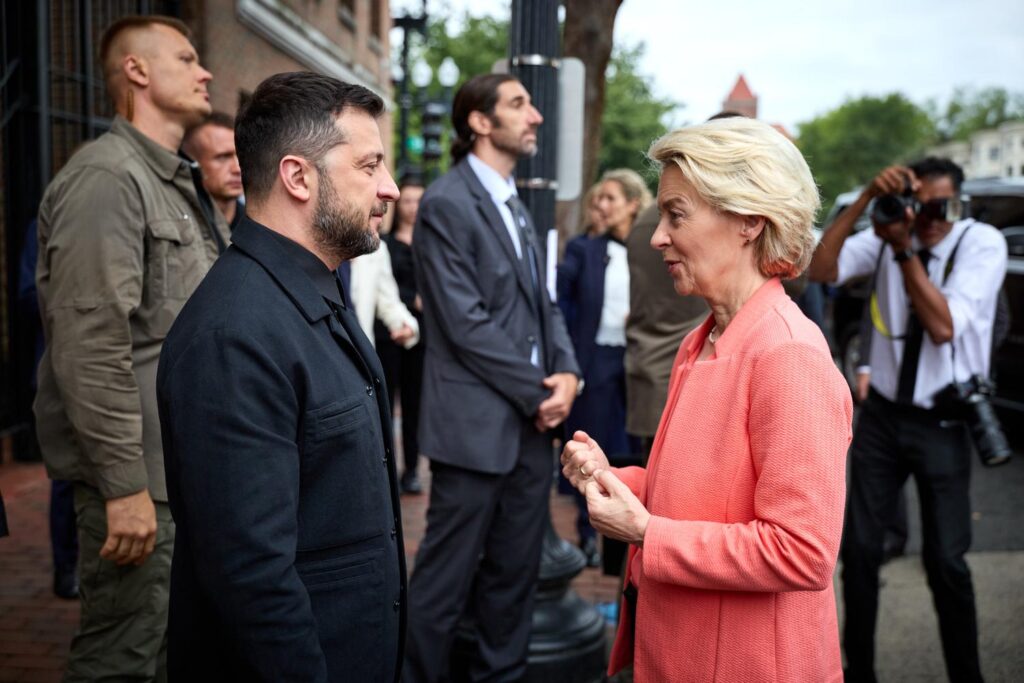The meeting between Volodymyr Zelenskyy and Donald Trump on 18 August revealed the kind of peace Trump wants to build and the risks that come with it.
He offered “NATO-like” protection for Ukraine without putting Ukraine in NATO. He said Europe would be the first line of defense, and the United States would help.
That sounds strong, but strength in security talks comes from enforcement. If the guarantee has no teeth, it is a headline, not a shield.
Putin rejects ceasefire proposal
The first early test came over a ceasefire. In Alaska, Trump told Vladimir Putin to halt the fighting. Putin refused.
After that, Trump told Zelenskyy that a ceasefire was not required for talks. Europe pushed back:
- Germany said real talks need a truce;
- France called it a necessity;
- Trump still waved it off and said negotiations could run while the war goes on.
That shift matters. Fighting during talks helps the side with more shells, more men, and more time. Russia benefits from that, not Ukraine.

Proposed diplomatic sequence
Trump then laid out a sequence. First, a Zelenskyy–Putin meeting. Then a three-way meeting with Trump. He said Putin suggested this order. Europeans repeated that claim.
Moscow did not confirm a summit. The Kremlin only said it might be worth “raising the level of representatives.” That is not a yes. It is a maybe. It keeps pressure on Kyiv while giving Moscow room to stall.
Territory discussions remain contentious
The hardest question surfaced next: territory. Trump told European leaders they would discuss possible territory exchanges based on the current line of contact.
Zelenskyy said land issues would be handled directly with Putin and that no land was being ceded in advance. He said he was ready to meet in any format and without preconditions.
European leaders later confirmed that nothing at the White House required Kyiv to surrender land. That point matters because Ukrainian public opinion remains firmly against giving up territory.
A June poll showed a majority “strongly opposed to any territorial concessions.” Those numbers limit any deal that trades land for paper promises.
Ukraine’s $100 billion weapons proposal
One new element stood out. Ukraine offered to buy security, not just receive it. Zelenskyy floated a plan to purchase about $90 to 100 bn in US weapons, with Europe helping to finance it. He even pointed to US purchases of Ukrainian drones once exports begin.
This reframes the relationship. Aid becomes sales. The goal is clear: tie US industry to Ukraine’s survival and make support harder to undo.
Trump’s team welcomed the shift and contrasted it with a blank check approach they blame on the last administration. Trump also refused to rule out some limited US role on the ground as part of future guarantees, though he kept details vague and stressed that Europe should carry most of the load.

Zelenskyy demands “everything” for security while Trump hints at vague Article 5-like protection
The enforcement challenge
This is foreign policy as a contract. It could make support steadier in Congress because it looks like jobs and deals. It could also push Europe to budget more for a longer war.
But none of that solves the core test of guarantees.
If Russia rejects any force that would actually defend Ukraine, then a “NATO-like” promise without NATO risks looking like the Budapest Memorandum in a new suit. The talking point is different. The outcome could be the same if there is no credible tripwire.
If Russia rejects any force that would actually defend Ukraine, a “NATO-like” promise without NATO is a Budapest Memorandum in a new suit.
Diplomatic choreography and European coordination
The tone at the White House was striking. In February, Trump had confronted Zelenskyy publicly, questioning Ukraine’s war efforts and demanding immediate negotiations.
This time, they smiled for the cameras, projecting calm and unity.
European leaders treated the day like a careful intervention. Analysts called it a “European family intervention” in Washington.
They posed for a “family photo” with Trump and Zelenskyy. They spoke in one voice about a truce and security guarantees. They worked to keep Trump close to positions they could live with. It was stagecraft with a purpose.

International reactions and momentum claims
Supporters of the meeting said it broke a three-year stalemate. NATO’s acting chief thanked Trump for joining a plan to craft real guarantees. Finland’s president said more progress had been made in weeks than in years.
Within Trump’s circle, officials echoed that line. They said the mix of talks and guarantees opened a new path.
This view places a bet on momentum. Get leaders into a room. Put the US seal on a piece of paper. Lock in Europe’s money and industry. Then rely on that web to hold the line if Russia tests it.
It might work if the web is tight and visible. It will fail if the web is loose and hidden.
The credibility test ahead
Here is the core problem to consider: you can design a plan that looks like NATO without NATO. You can write guarantees, appoint monitors, and schedule summits.
But credibility does not come from words alone. It comes from a clear rule and a known cost for breaking it.
Russia said it views that kind of rule as a threat. That means any promise that truly protects Ukraine will anger Moscow.
The United States and Europe must decide if they are willing to stand behind a line that Moscow threatens to test. If the answer is yes, then the “NATO-like” label can mean something. If the answer is no, the label is a slogan.

What the meeting achieved
What, then, did this meeting achieve?
It created an outline. Security guarantees will be drafted. Talks may proceed while the war continues. A Zelenskyy–Putin meeting is being pursued, though Russia has not confirmed it. No ceasefire was agreed. There was no map to a final deal.
The near term will test whether Europe can carry more of the burden and whether Washington will turn sales into a lasting stake in Ukraine’s defense.
It will also test whether Kyiv can keep the public on side if territorial questions come to the table. The polling suggests that trading land for peace is still a red line for many Ukrainians.
That constraint is real. It will shape what any negotiator can sign and sell at home.

Ukraine is not real estate deal: Ukrainians see Trump’s land concession proposal as betrayal
Combat bargaining and future challenges
By accepting negotiations while the war continues, Trump has chosen combat bargaining. That is a hard road. It tends to reward the side that can absorb more losses.
If the West wants that road to lead to a fair peace, it needs to shorten the journey. That means:
- Quicker air defenses for cities
- Faster ammunition for the front
- Tighter rules around sanctions leaks
- Clarity with Moscow: if Russia tests a guarantee, the response must be automatic.
The day it is tested is the day it proves its worth. If that is clear, a “NATO-like” plan has a chance to deter. If it is not clear, the war will pause, and then it will resume.
Motion, not movement
In short, Washington produced motion, not yet movement:
- the summit showed better tone and a larger cast;
- it aired a new economic link and a draft promise;
- ye, it did not yet solve the enforcement gap at the heart of any deal.
Until that gap closes, Ukraine will keep fighting while diplomacy tries to catch up. That is the reality after 18 August.
It is not defeat. It is not victory. It is the start of a longer test that will measure the will of Europe, the steadiness of the United States, and the patience of the Kremlin.



